September 4, 2024 · 12 min read
Governance and Compliance in Enterprise Project Management

Shaimaa Badawi
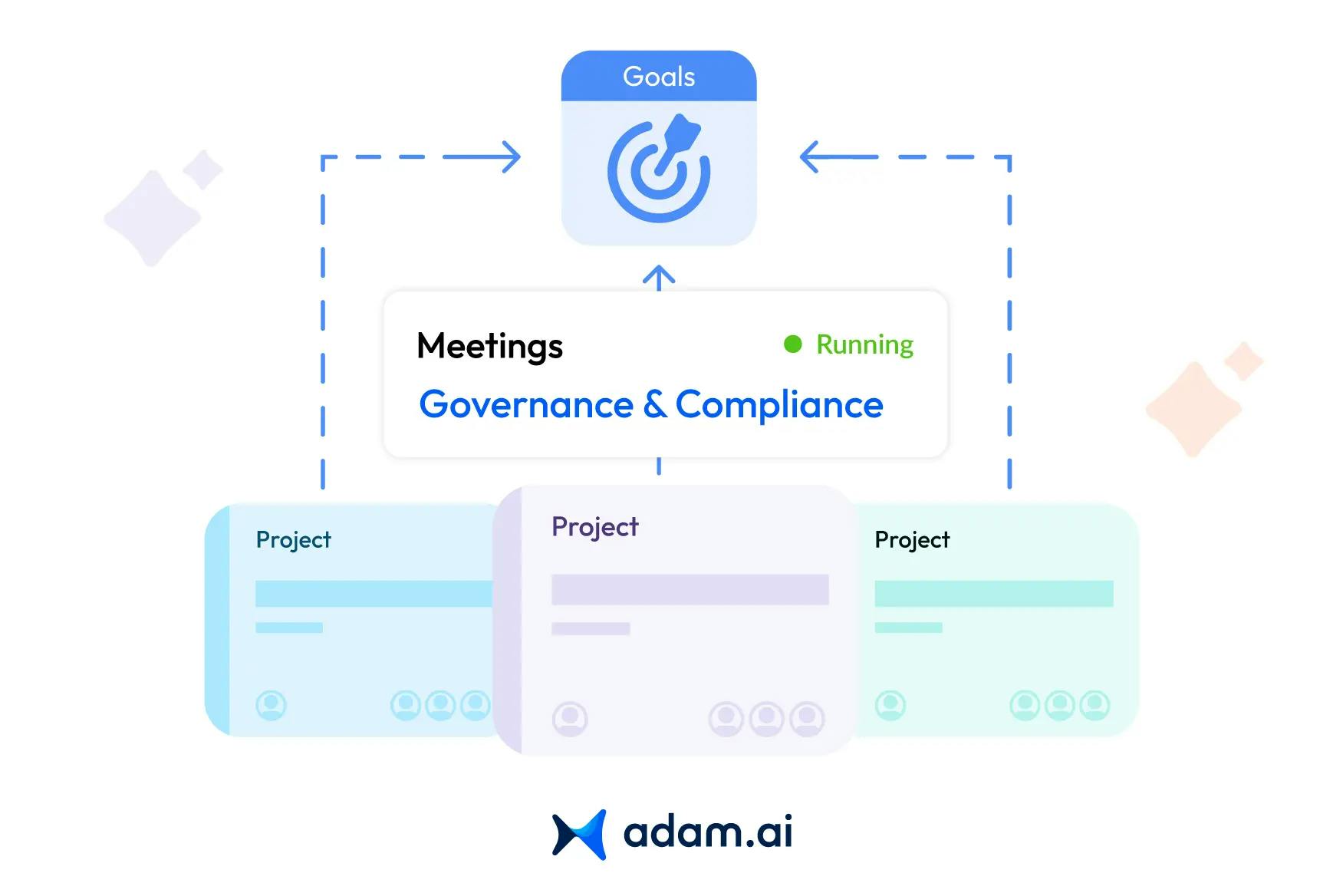
Governance and compliance are vital components in managing large-scale projects, especially at the executive level. This article explores how strong governance frameworks and compliance practices can enhance decision-making, drive accountability, and keep projects on track, ultimately leading to sustainable success. Dive in to discover how these principles create a foundation for better project management and strategic alignment.
What is governance and compliance in enterprise project management?
Governance in enterprise project management ensures that all projects align with the organization's strategic goals, providing a framework for decision-making, accountability, and risk management throughout the project lifecycle.
Compliance focuses on adhering to legal regulations, industry standards, and internal policies to avoid risks and penalties. Together, governance and compliance help organizations deliver projects efficiently, stay on track, and ensure long-term success by aligning with both strategic objectives and regulatory requirements.
Why is governance important for managing enterprise projects?
Governance plays a crucial role in managing enterprise projects by providing a structured framework that helps ensure accountability, clear decision-making, and efficient project execution. It aids in:
- Better decision-making: Governance provides leaders with a structured process for evaluating information and making decisions that align with organizational objectives, helping to avoid missteps.
- Ensuring timeliness and budget adherence: By assigning clear roles and responsibilities, governance helps project managers keep projects on schedule and within budget, ensuring that teams work cohesively toward shared goals.
- Enhancing accountability: Governance ensures that everyone understands their role, making it clear who is responsible for each task. This accountability keeps the project team focused and reduces delays.
- Facilitating communication: With a solid governance structure, communication is streamlined across departments and teams, reducing misunderstandings and improving overall project coordination.
- Increasing estimate accuracy: Governance helps improve the accuracy of project cost, timeline, and resource estimates, reducing waste and inefficiency.
- Boosting efficiency and effectiveness: Governance ensures that decision-makers have the right information at the right time, leading to more effective project management and successful outcomes.
What role does compliance play in enterprise project management?
Compliance is integral to enterprise project management as it ensures that projects align with legal, regulatory, and industry-specific requirements. It plays several critical roles:
- Legal adherence: Compliance ensures that projects are executed within the bounds of legal frameworks, including data protection laws, industry-specific regulations, and contractual obligations. This prevents legal issues that could delay or derail projects.
- Risk mitigation: By adhering to established standards and regulations, compliance helps protect projects from potential legal, financial, and reputational risks. It acts as a preventive measure, especially in highly regulated industries such as healthcare, finance, or IT.
- Building stakeholder trust: Compliance fosters stakeholder confidence by showing that a project is being managed ethically and responsibly. When stakeholders see that regulations are being followed, they are more likely to trust the project’s outcomes.
- Resource allocation: Meeting compliance standards often requires dedicated resources for things like quality control, data security, and audit processes. Compliance helps prioritize these needs and ensures that resources are used appropriately to meet regulatory demands.
- Fostering inclusivity: Beyond regulatory needs, compliance also includes aligning projects with cultural and social expectations, promoting diversity, and fostering inclusion. This adds a layer of social responsibility, making projects not only lawful but also culturally aware.
How can risk management enhance governance and compliance?
Risk management plays a crucial role in strengthening governance and compliance by identifying, evaluating, and mitigating potential risks that could hinder project success or lead to non-compliance with regulatory requirements. Here's how effective risk management enhances governance and compliance:
1. Promoting accountability
Risk management establishes clear ownership over potential risks by assigning responsibility to individuals or teams. This ensures that every stakeholder understands their role in mitigating risks, fostering a culture of accountability. By linking risks to specific actions, risk management reinforces governance, as everyone is aware of their responsibilities in ensuring the organization adheres to legal and regulatory standards.
2. Proactive risk mitigation
One of the key benefits of risk management is the ability to foresee and mitigate risks before they become issues. This proactive approach not only prevents compliance violations but also helps the organization stay ahead of ever-changing regulations. It acts as a shield against potential legal, financial, or reputational damage by implementing preventive measures, aligning governance structures with compliance objectives.
3. Enhancing informed decision-making
A well-structured risk management process provides leaders with clear insights into potential risks, helping them make informed decisions. By identifying risks related to governance and compliance, executives can assess the impact of their decisions on long-term objectives and ensure they align with legal requirements and organizational policies. This ensures that governance efforts are focused on mitigating risks while maintaining operational and strategic integrity.
4. Efficient resource allocation
Risk management allows organizations to allocate resources, whether human, financial, or technological, more effectively. By prioritizing risks based on their likelihood and impact, resources can be directed toward high-risk areas that need immediate attention. This focus enhances governance by ensuring compliance efforts are concentrated where they are most needed, reducing waste and improving efficiency.
5. Continuous monitoring and improvement
Governance and compliance aren't static; they evolve as regulations change and business environments shift. Risk management provides a continuous feedback loop, allowing organizations to monitor risks in real-time and adjust their strategies accordingly. Regular reviews and updates to risk mitigation plans ensure that compliance measures are up-to-date, and governance practices are agile enough to adapt to new challenges or opportunities.
6. Reducing the cost of non-compliance
Effective risk management also helps organizations minimize the costs associated with non-compliance, such as fines, legal fees, and reputational damage. By systematically identifying compliance risks and addressing them, organizations can avoid the significant financial and operational disruptions that non-compliance can bring. This aligns governance with the overarching goal of safeguarding the organization’s reputation and financial health.
What are the main components of enterprise project governance and compliance?
In enterprise project management, governance and compliance serve as the pillars that ensure projects run smoothly, align with corporate strategy, and meet legal and regulatory standards. Several key components are integral to ensuring successful governance and compliance:
1. Ensuring projects align with organizational strategy
The primary goal of governance in projects is to ensure that all efforts align with the organization’s strategic goals. This means that every project undertaken supports the broader mission of the company, ensuring resources are focused on initiatives that deliver value to the business. Strategic alignment involves prioritizing projects based on their relevance and impact on corporate objectives.
2. Identifying and managing project risks
Risk management involves identifying potential threats to the project, assessing their impact, and implementing strategies to mitigate those risks. Effective governance includes a robust risk management process that helps prevent delays, budget overruns, or regulatory non-compliance. The goal is to proactively manage risks before they affect the project’s success.
3. Managing the entire project portfolio effectively
Portfolio management provides an overarching view of all the projects within an organization, ensuring that the collective project efforts are balanced and aligned with corporate priorities. Governance ensures that projects are added, removed, or adjusted based on their alignment with strategic goals, resource availability, and potential value to the organization.
4. Establishing a clear leadership and governance structure
A well-defined governance framework requires a clear organizational structure that outlines the roles and responsibilities of key stakeholders. Governance committees, executive leadership, and project management teams must work collaboratively to ensure decisions are made transparently and in line with corporate objectives. These structures ensure accountability at every level of project execution.
5. Managing stakeholder expectations and interests
Successful governance involves effective stakeholder management, which ensures that the interests and expectations of all project stakeholders, from corporate boards to project teams, are addressed. Properly managing stakeholder expectations is crucial for gaining buy-in and ensuring smooth project progress. This includes clear communication channels and ensuring transparency in decision-making processes.
6. Monitoring and evaluating project performance
Governance requires regular monitoring and evaluation of project performance. Key performance indicators (KPIs) should be established to measure whether projects are on track, within budget, and delivering the expected outcomes. This enables organizations to adjust projects as needed to stay aligned with strategic goals and ensure compliance with regulations.
7. Supporting business change and transformation
Governance also supports business transformation initiatives by ensuring that changes in the business landscape, such as market trends or new technologies, are integrated into project strategies. Governance ensures that projects remain agile and responsive to new opportunities or threats, helping the organization continuously adapt and transform.
What are the key challenges in ensuring governance and compliance for large-scale projects?
In managing large-scale projects, organizations often encounter several governance and compliance challenges that can hinder project success. Let's explore some of these most pressing challenges:
1. Constantly changing regulations
Laws and regulations that impact large-scale projects are frequently updated. Keeping up with these changes can be difficult, which may lead to compliance issues if the newest standards are not implemented in a timely manner.
2. Rising cybersecurity threats
As organizations become more digitally dependent, the risk of cyberattacks and data breaches has increased. Such incidents can lead to violations of data privacy laws and may result in significant penalties.
3. Misaligned stakeholder expectations
Large projects often involve multiple stakeholders, each with their own goals and requirements. Balancing these interests while meeting compliance standards can be particularly challenging, especially when they conflict.
4. Limited awareness of compliance requirements
Many employees and even managers may not fully understand the importance of compliance or the specific requirements involved, leading to unintentional violations.
5. Resource constraints
Ensuring compliance often requires considerable resources, both financial and human. Limited resources can hinder an organization's ability to carry out necessary compliance tasks, potentially leading to lapses.
6. Industry-specific compliance complexities
Different sectors come with unique regulatory requirements. Whether it's the stringent data protection rules in healthcare or financial reporting standards in banking, navigating these sector-specific rules adds to the complexity of ensuring compliance.
7. Balancing compliance with business objectives
Compliance efforts can sometimes seem at odds with broader business goals. Organizations often face the challenge of integrating regulatory adherence without compromising project timelines or strategic initiatives.
How can organizations effectively address governance and compliance challenges?
Overcoming governance and compliance challenges in large-scale projects demands a proactive and strategic approach. Here are several practical strategies to address these challenges:
1. Stay updated with regulatory changes
Regular training and education are essential for staying current with shifting regulatory landscapes. Organizations should consider subscribing to legal update services or implementing compliance teams dedicated to monitoring regulatory developments. This ensures any new laws or standards are incorporated into project processes in a timely manner.
2. Strengthen cybersecurity measures
To mitigate the risk of data breaches, organizations should invest in robust cybersecurity systems. Regular security audits and ongoing training for employees on security protocols are essential for maintaining compliance with data protection laws. Additionally, integrating advanced cybersecurity tools can prevent vulnerabilities that lead to compliance failures.
3. Align stakeholder expectations early on
Open communication with all stakeholders from the beginning helps in managing their expectations regarding compliance. It’s critical to involve stakeholders in the compliance planning process to ensure their requirements are aligned with the organization’s legal obligations. Setting realistic expectations and clear goals can prevent future conflicts.
4. Promote compliance awareness across teams
Organizing regular compliance training for all employees ensures everyone understands the importance of adhering to rules and regulations. These programs should be part of the organizational culture, ensuring that compliance becomes second nature in daily operations. Internal communications and clear documentation of policies further promote awareness.
5. Optimize resource allocation for compliance
Efficient resource allocation is critical in meeting compliance requirements, especially in resource-constrained environments. By prioritizing compliance tasks based on risk assessments, organizations can ensure that the most critical compliance issues are addressed without overextending budgets or personnel. Leveraging compliance management software can help automate routine tasks and optimize resource use.
6. Tailor compliance solutions for industry-specific requirements
Different industries have varying compliance needs, from healthcare’s stringent data protection to the financial sector’s regulatory reporting requirements. Organizations should develop specialized compliance strategies for each sector they operate in. This can include sector-specific training programs, tailored compliance frameworks, and industry-standard certifications.
7. Integrate compliance into business strategy
To address the tension between compliance and business objectives, organizations must weave compliance into their overall strategy. Compliance should not be seen as a hindrance to business goals but as a strategic component that helps protect the organization from risks. This requires cross-functional collaboration between compliance teams and business units to ensure alignment.
8. Leverage technology for compliance management
Modern compliance management platforms can automate the tracking of compliance tasks, regulatory updates, and risk assessments. These tools centralize compliance efforts, making it easier for teams to stay on top of requirements while improving efficiency. Technology also enables real-time monitoring, helping organizations quickly adapt to any compliance challenges that arise.
Ensure effective governance and compliance in enterprise projects with adam.ai
For enterprise-level projects, ensuring robust governance and compliance is a critical factor in driving success. Here’s how adam.ai can elevate your project governance and compliance efforts:
- Agenda and content management: Seamlessly manage boardroom agendas for enterprise project meetings. adam.ai consolidates project documents, progress reports, and compliance requirements in one platform, ensuring stakeholders can easily access crucial information and align with governance standards.

- Action tracking and accountability: Keep projects in line with governance frameworks by leveraging adam.ai’s action tracking tools. Assign tasks, monitor progress, and ensure all decisions are recorded and followed through, promoting accountability across project teams.
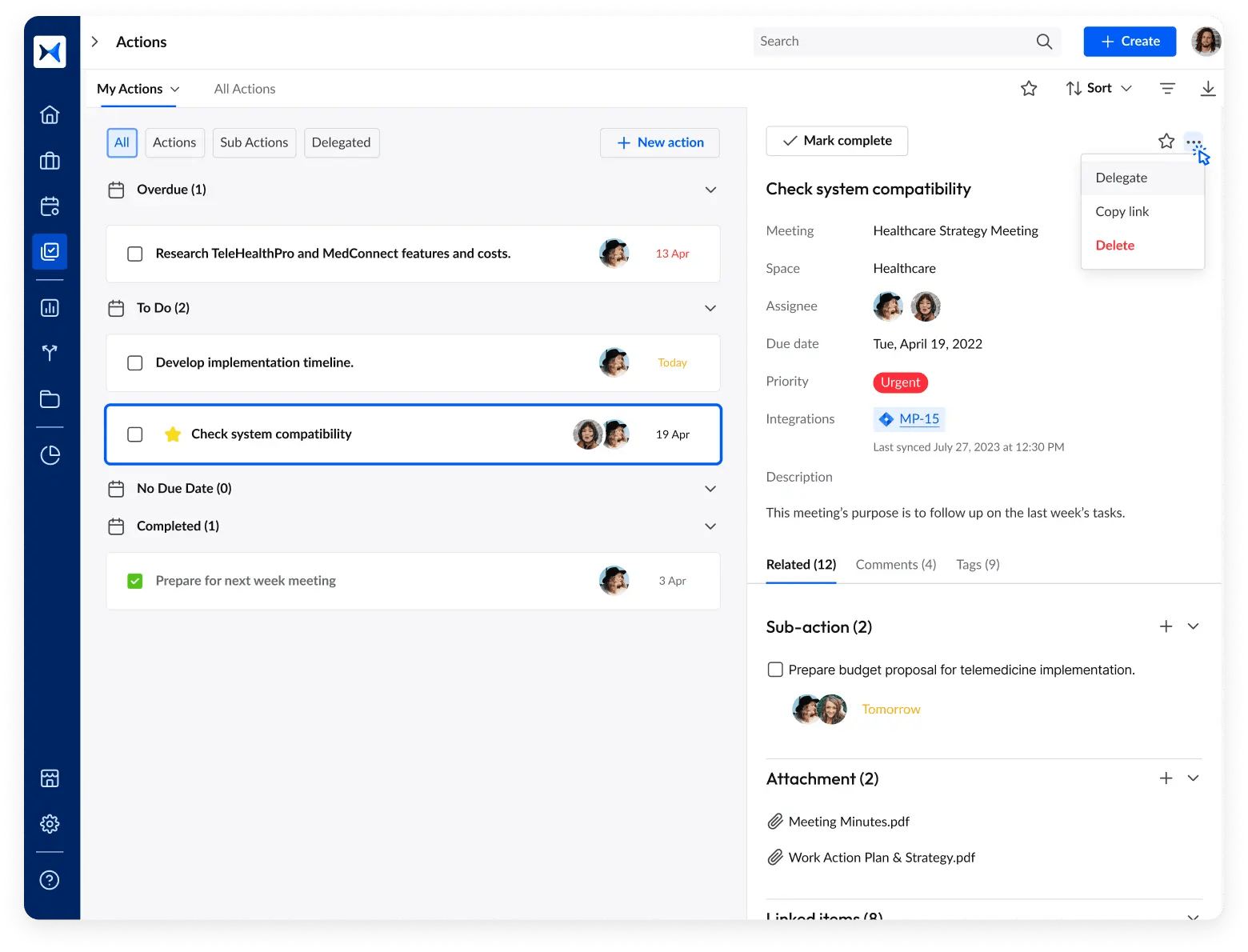
- Multi-project space organization: Manage various phases of large-scale projects in distinct, organized spaces. adam.ai’s multi-space functionality helps governance bodies oversee multiple projects with clarity and precision, streamlining communication and ensuring compliance across departments.
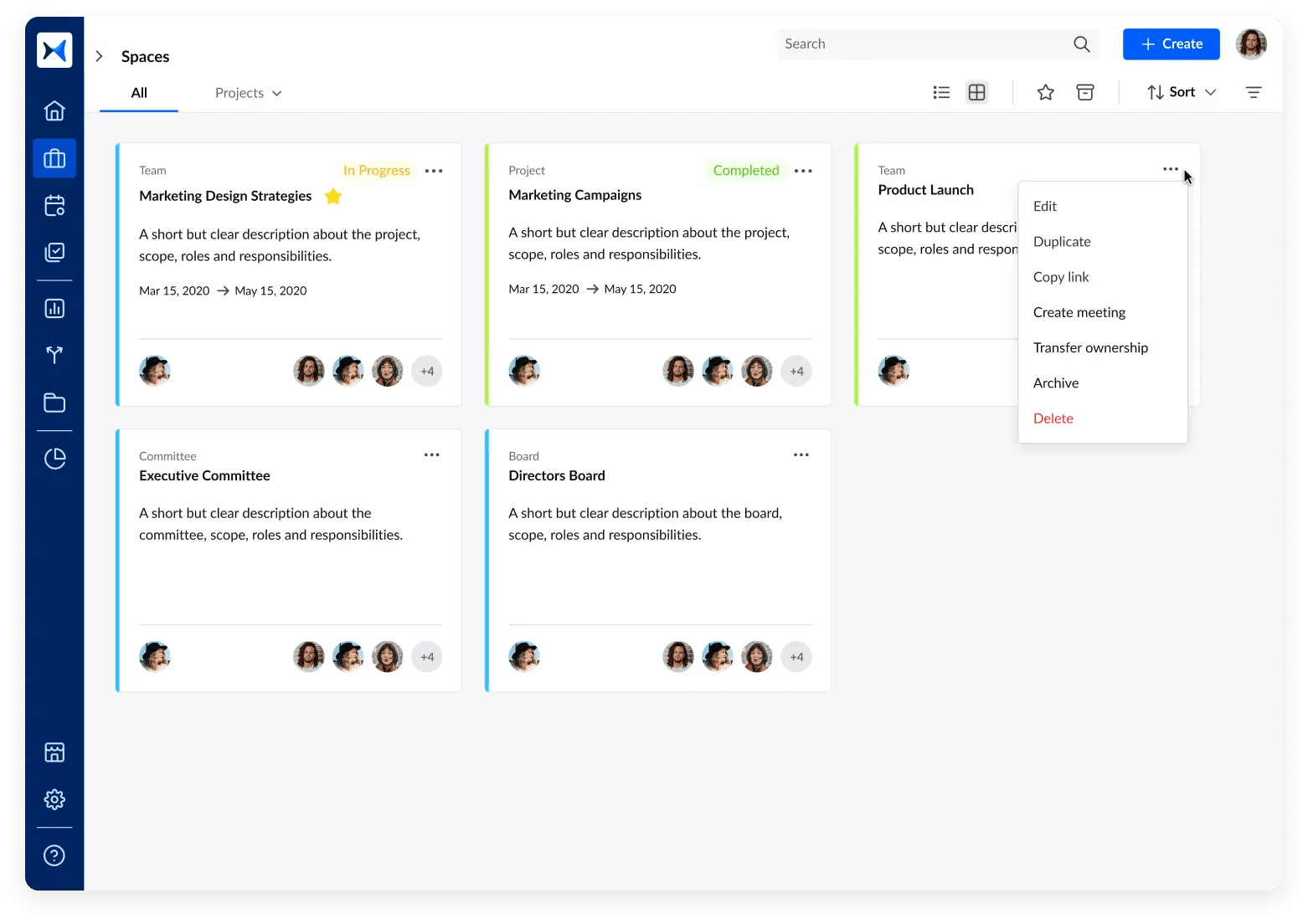
- Automated meeting minutes: Save time with automated documentation. adam.ai captures discussions, decisions, and action points, ensuring comprehensive records are available for board review, supporting governance and regulatory compliance at every stage.
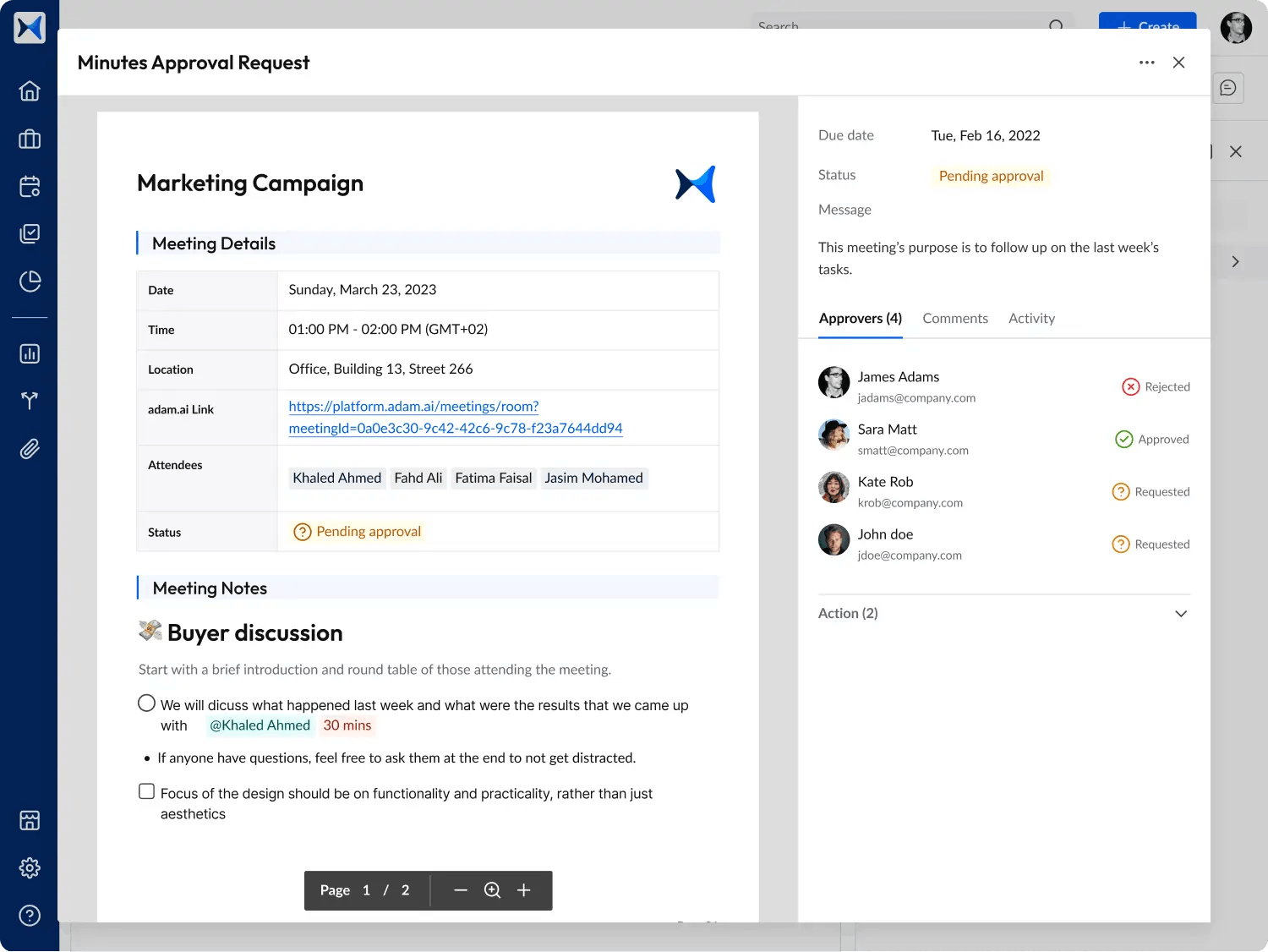
- Voting and decision management: Simplify boardroom decision-making with adam.ai’s built-in voting features. Track who voted on critical decisions and ensure transparency, making it easier to meet governance standards while managing enterprise project approvals.
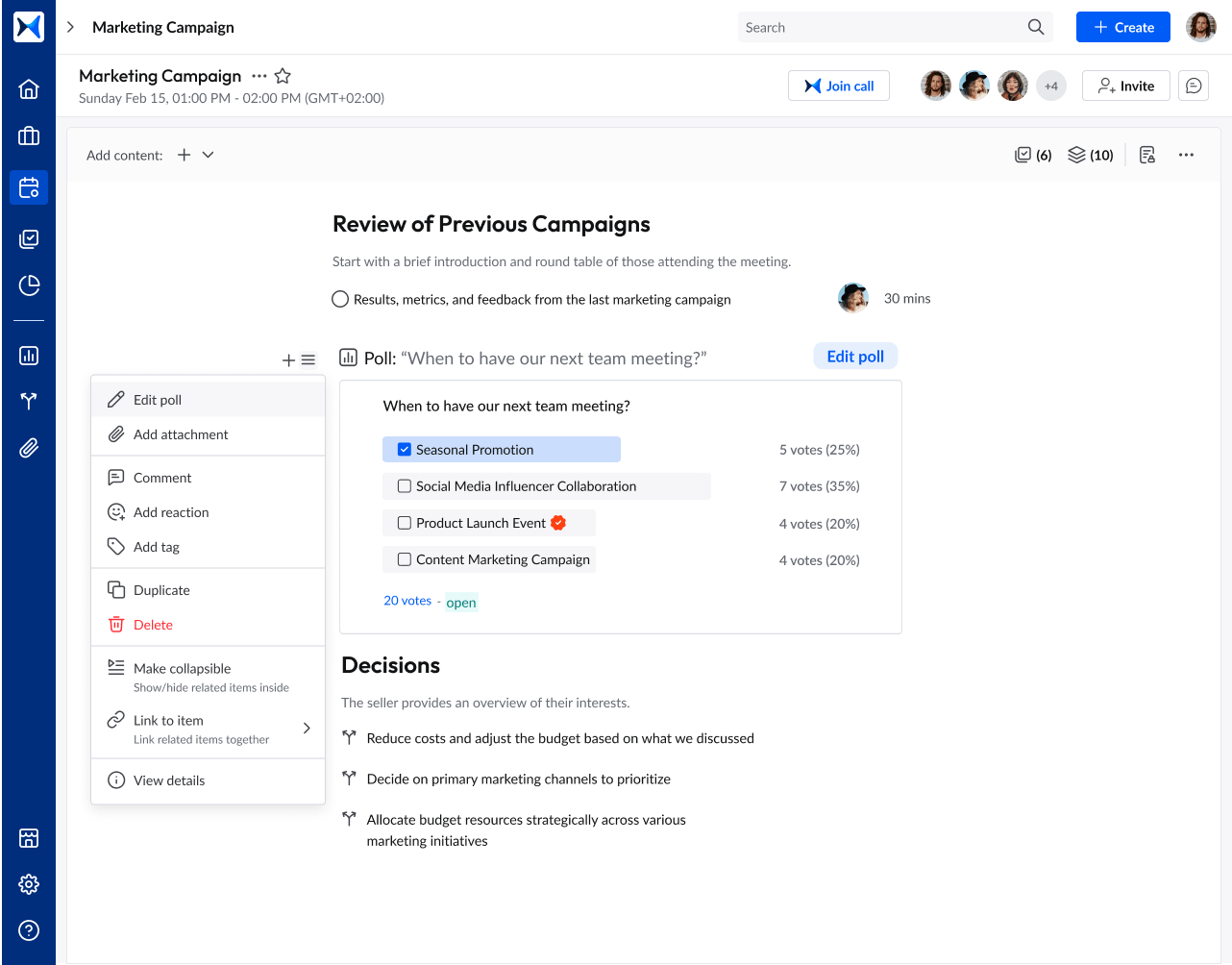
- Data-driven insights: Leverage adam.ai’s analytics dashboard to monitor meeting participation, evaluate project progress, and ensure compliance with governance and regulatory standards. This data-driven approach equips boards with the insights needed to steer projects toward success while staying aligned with organizational goals.
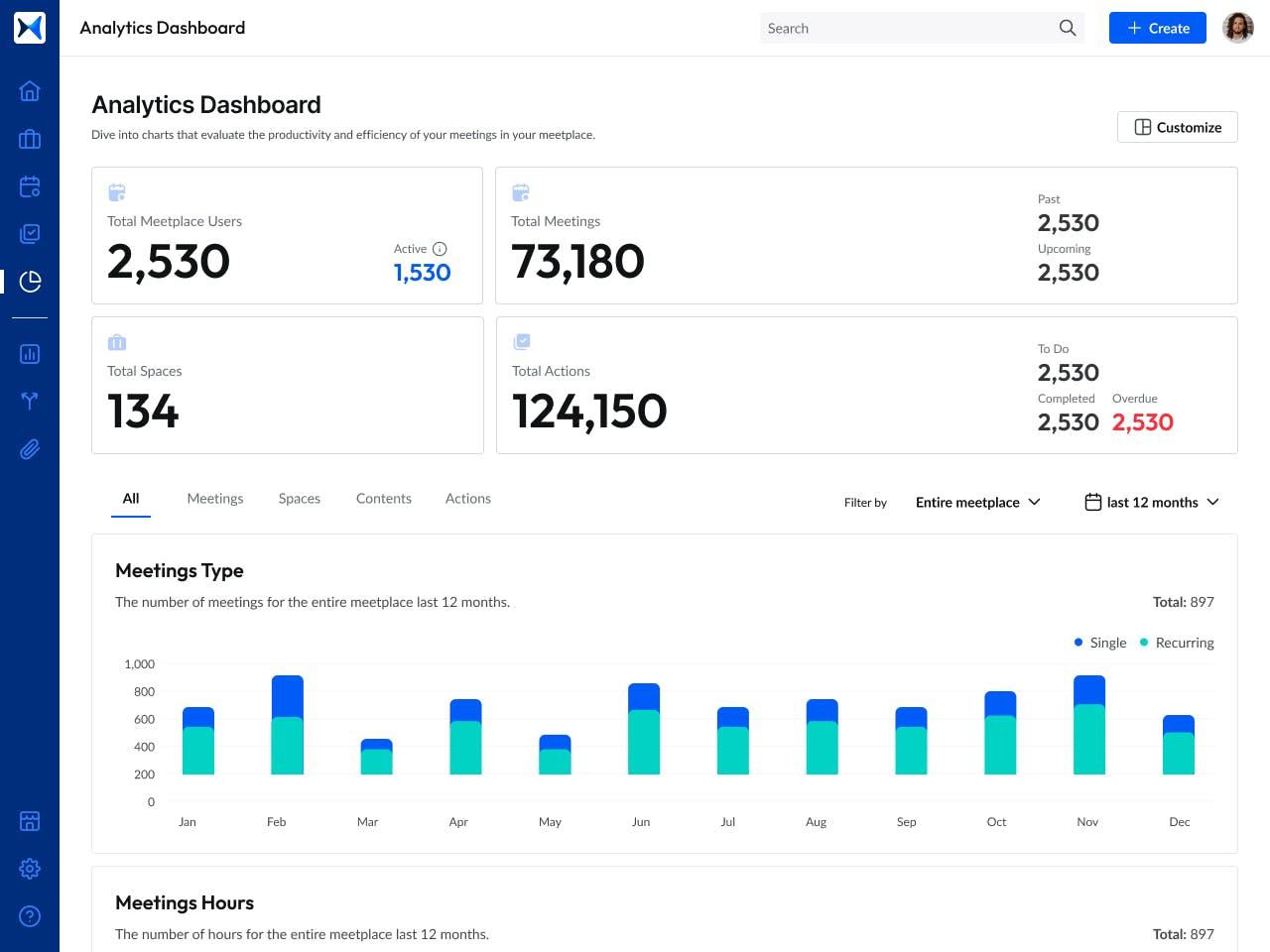
Transform how you conduct critical meetings—From meticulous preparation to effective execution and insightful follow-up, adam.ai integrates comprehensive analytics, full customization, and intuitive interfaces with powerful meeting management tools.
Easy onboarding. Enterprise-grade security. 24/7 dedicated support.
The bottom line
Effective governance and compliance are the cornerstones of successful enterprise project management. Modern tools can greatly support this process by providing centralized platforms to track progress, monitor compliance, and streamline decision-making, ensuring that large-scale projects remain on course and deliver value.
And while there may be multiple solutions available, here is why adam.ai is the meeting management software platform you can trust:
- adam.ai is one of Atlassian Ventures' portfolio companies.
- In the meeting management software category on G2, adam.ai has been ranked a leader and a high performer for successive quarters in the past years.
- adam.ai has been included in the Forrester Report in the AI-enabled meeting technology landscape.
- adam.ai is trusted and used by powerful teams and organizations worldwide for all types of critical meetings, like board, committee, project management, and business development meetings.
- And most importantly, adam.ai integrates with your existing workflow, is SOC2 compliant, provides dedicated support and success, and has a free trial option.
Subscribe to adam.ai blog
Stay ahead with the latest insights—get our newest blog posts, tips, and updates sent straight to your inbox.